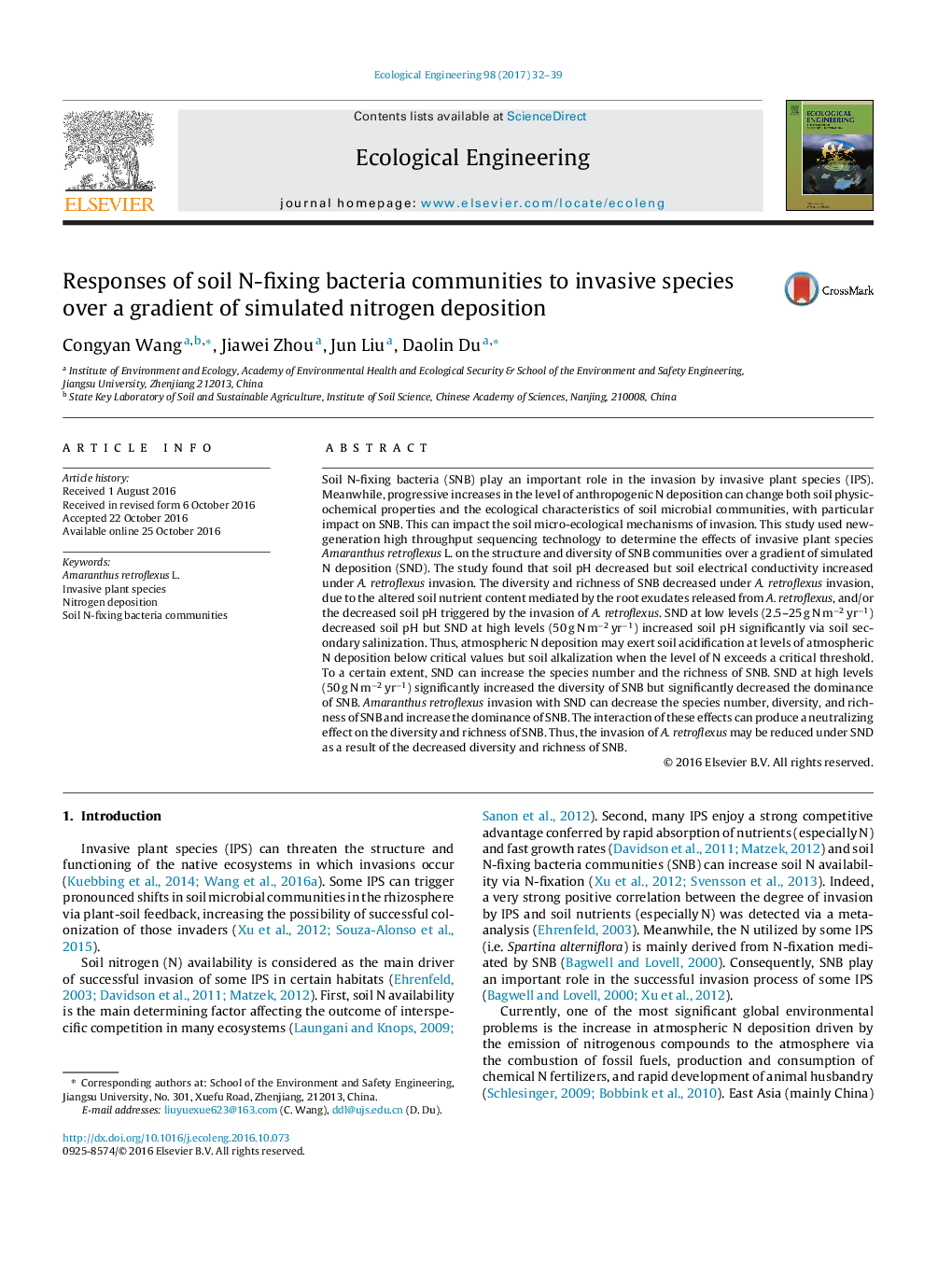| Article ID | Journal | Published Year | Pages | File Type |
|---|---|---|---|---|
| 5744051 | Ecological Engineering | 2017 | 8 Pages |
Soil N-fixing bacteria (SNB) play an important role in the invasion by invasive plant species (IPS). Meanwhile, progressive increases in the level of anthropogenic N deposition can change both soil physicochemical properties and the ecological characteristics of soil microbial communities, with particular impact on SNB. This can impact the soil micro-ecological mechanisms of invasion. This study used new-generation high throughput sequencing technology to determine the effects of invasive plant species Amaranthus retroflexus L. on the structure and diversity of SNB communities over a gradient of simulated N deposition (SND). The study found that soil pH decreased but soil electrical conductivity increased under A. retroflexus invasion. The diversity and richness of SNB decreased under A. retroflexus invasion, due to the altered soil nutrient content mediated by the root exudates released from A. retroflexus, and/or the decreased soil pH triggered by the invasion of A. retroflexus. SND at low levels (2.5-25 g N mâ2 yrâ1) decreased soil pH but SND at high levels (50 g N mâ2 yrâ1) increased soil pH significantly via soil secondary salinization. Thus, atmospheric N deposition may exert soil acidification at levels of atmospheric N deposition below critical values but soil alkalization when the level of N exceeds a critical threshold. To a certain extent, SND can increase the species number and the richness of SNB. SND at high levels (50 g N mâ2 yrâ1) significantly increased the diversity of SNB but significantly decreased the dominance of SNB. Amaranthus retroflexus invasion with SND can decrease the species number, diversity, and richness of SNB and increase the dominance of SNB. The interaction of these effects can produce a neutralizing effect on the diversity and richness of SNB. Thus, the invasion of A. retroflexus may be reduced under SND as a result of the decreased diversity and richness of SNB.
